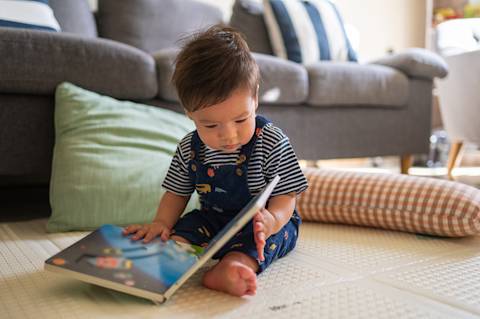Children’s first relationships that they develop in life are with their caregivers. These interactions impact the type of attachment style they develop, or how they form and maintain emotional bonds. There are different steps we can take as caregivers to help our children form positive relationships with us and with others throughout their lives.

Children can develop one of the following four attachment styles:
Secure attachment: Children with this attachment style have a positive view of themselves and others. They feel safe and secure in their relationships and are able to explore their environment without fear of abandonment. As caregivers, we strive to help our children develop a secure attachment style.
Anxious-ambivalent attachment: Children with this attachment style often cling to their caregivers and have difficulty exploring their environment. They might need constant reassurance that they are supported and loved.
Anxious-avoidant attachment: Children with this attachment style often avoid or reject their caregivers and have difficulty forming close relationships. They also might have a hard time expressing their emotions or struggle with commitment.
Disorganized attachment: Children with this attachment style may have trouble understanding and managing their emotions, and they may even become emotionally numb in stressful situations. While they want closeness, they might also show discomfort when someone does get close.
How children with different attachment styles might behave at the park
To better understand what these different attachment styles might look like, imagine a caregiver taking their child to the park to play. A securely attached child will likely explore the park with curiosity and approach other children to play with them. The child will return to their caregiver from time-to-time, especially if they get tired, overwhelmed, or need support.
When a child with avoidant attachment gets to the park, they will likely leave their caregiver immediately to play by themselves, and they might not show interest in playing with other children. They won’t show much affection to their caregiver or ask for their help, even if they need it.
A child with an ambivalent attachment will most likely stay by their caregiver’s side and need constant reassurance that everything is alright. They might have a hard time approaching other children to play with them and will likely avoid exploring the park on their own without their caregiver.
When playing at the park, a child with a disorganized attachment style may seem confused or overwhelmed. They will often go to their caregiver for comfort but then push the caregiver away when they try to offer support. Children with this attachment style might seem to display erratic or unusual behaviors, such as hiding from their caregiver or becoming upset for no reason.
How to help your child develop a secure attachment style
Attachment styles can change over time. It’s never too early or too late to help your child develop a secure attachment. The following steps can help you get started:
Respond consistently to your child. Set specific boundaries and communicate those to your child as often as possible. For example, let them know exactly what you expect of them when you’re out at the grocery store, sitting at the table to eat, when they’re playing with their friends, and in other situations. Then follow through with these boundaries consistently. When children know what to expect of their caregiver in different situations, it helps them feel safe and secure, and they develop trust in their caregiver.
Encourage them to learn about and share their emotions with you. Children have big emotions, just like we do as adults. However, they often don’t have the language to express their feelings yet. When we guide them through their emotions, we can help them find healthy ways to express themselves while showing them that they can trust us with their big feelings. As you continue to build this trust, your child will feel more and more comfortable coming to you for guidance when they’re feeling big emotions.
Spend quality time with your child. As often as you can, join in on the activities that your child enjoys. When you give them your undivided attention, you’re building your bond with your child and giving them a sense of safety and stability. Even spending a few minutes coloring together, dancing to a favorite song, or going for a short walk can have many benefits.
Support your child's independence. As children become toddlers and preschoolers, they crave independence and the ability to make their own choices. When we give them the option between two snacks or let them pick their outfit for the day, we’re showing that we support them in their choices. They also learn how to solve problems and make decisions on their own, which will benefit them throughout their lives.
Use positive discipline when possible. Positive discipline is a child-centered approach that focuses on teaching and guiding children rather than punishing them. Research shows that children learn best when they feel safe and connected in their relationships. Focusing on developing these strong relationships first puts children in the best position to follow established rules and boundaries. Read more about positive discipline techniques.






